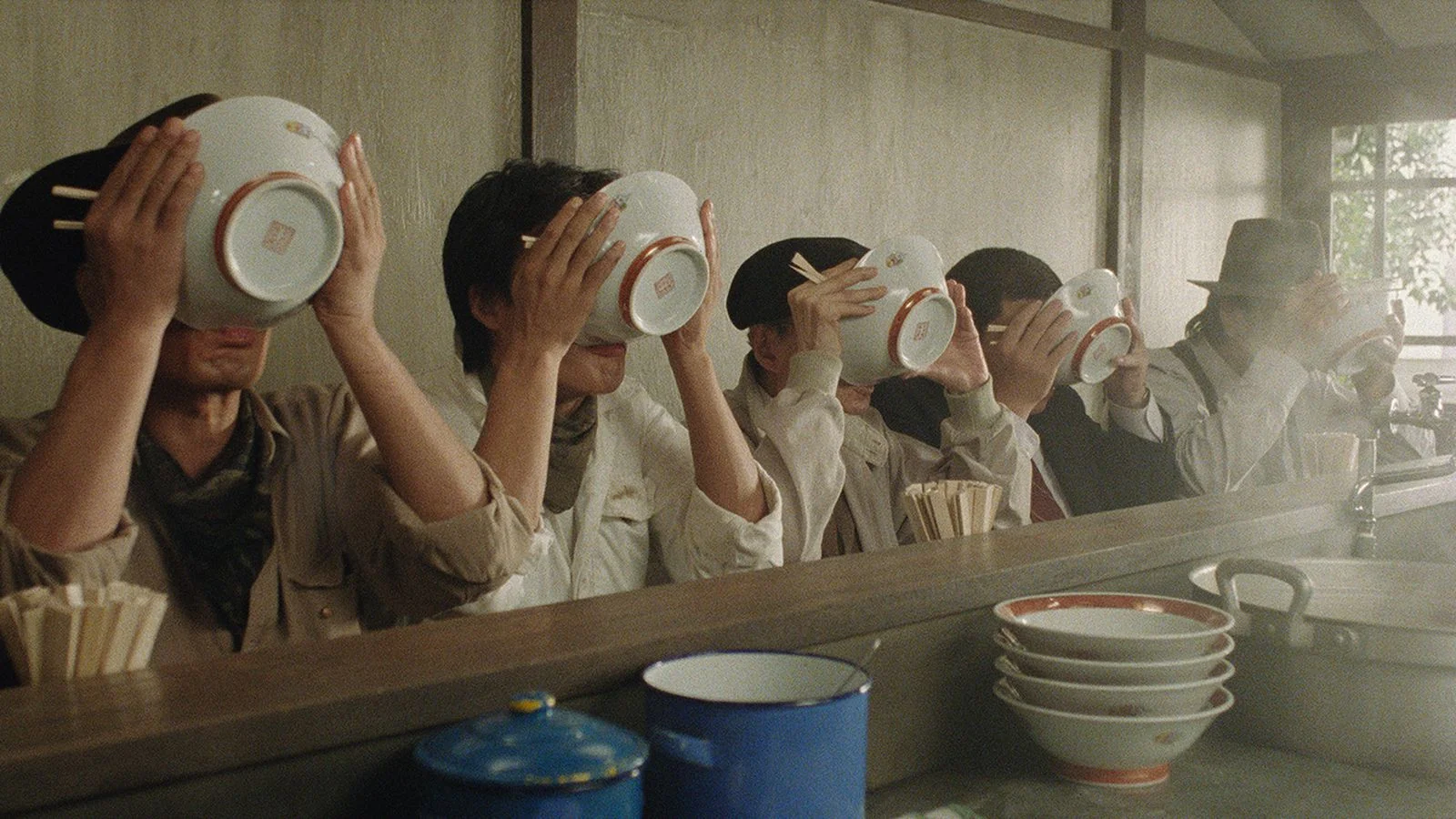Retro Review by Jessica Carr
*Writer’s Note: You are not going to want to read this review on an empty stomach. I enjoyed a bowl of Thai fried rice before writing this and wow, I feel inspired.*
The love of food is something that we all have in common. From the beginning of time, food has always been there. Whether you view it simply as a necessity needed to live or as something to truly be treasured, we are all connected by food. That’s why it was a work of genius in 1985 for Juzo Itami to create a Japanese film that uses food as a way to meditate on human behavior. In Tampopo, food is the thread that connects together the different ideas Itami is trying to communicate. Through humor, delicious culinary delicacies and a whole lot of heart, Tampopo has become one of my all-time favorite films. Now grab a bowl of ramen and quietly apologize to the pork because we are about to dive into this cinematic masterpiece.
The opening of Tampopo really captures what the whole film is about. A gangster and his lover set up a picnic feast in a movie theater. The gangster looks directly at the camera and addresses the audience. He talks about how he hates it when people eat loud snacks at the theater and he also briefly mentions the “last movie” that plays just before one dies. Breaking the fourth wall in this opening scene really sets the tone for the rest of the movie. It informs us that weird things are going to happen, but the audience should probably just go along with it.
The film is structured around a central narrative about a truck driver who decides to help a single mom fix up her ramen shop. Goro (Tsutomu Yamazaki) trains Tampopo (Nobuko Miyamoto) and helps her find the secret to creating the world’s best ramen. Throughout this main narrative, various vignettes are intertwined. A mischievous old woman squeezing food at a grocery store, sensual scenes involving food, and the gangster and his lover--these are all among the smaller stories told by the film. I love how Itami allows the camera to wander away from the main characters until it finds another story it wants to show the audience.
Of the many thematic ideas contained within the film, one is the connection between love and food. From birth, we bond with our mothers through the act of breastfeeding. It is the first form of nourishment that we get once we are born and perhaps it is also the first act of love that we receive. Itami places a lingering shot of a mom breastfeeding her baby as the credits for Tampopo roll. A vignette shows a sickly mom rise from her bed and cook her family one last meal before she dies; she gives them a final act of love by cooking them dinner. For me, food and love have always been connected. I enjoy showing affection for my friends and family by baking them a sweet treat or taking them out for a meal. Itami does a great job of reflecting this special connection throughout the film’s runtime.
After considering all of the smaller vignettes in Tampopo, I felt like there was one specific thing Itami was satirizing: each vignette features at least one societal taboo that is connected to food in some way. You have the old woman who indulges herself by squeezing foods at a grocery store. She is definitely showing behavior that goes against what an upstanding Japanese citizen should do. Also, my favorite vignette which shows a group of Japanese women who are taking eating etiquette classes. The instructor tells them to eat the pasta with special care making sure they don’t make any noise and they certainly shouldn’t slurp the delicate spaghetti noodles. After seeing an American man go to town slurping the pasta, a ripple effect begins as the women one-by-one start slurping their noodles with intense vacuum-like motions. It is one of the funniest moments of the film, and it seems to be a valid critique on the role of women in Japanese culture. You see the women really enjoy themselves when they are allowed to make noise and be messy. It is actually quite liberating to see them enjoy the pasta instead of worrying about being polite.
In terms of camera work, Itami allows the camera to be playful. It wanders on its own until it finds a story that it wishes to share with the audience. The camera also gets close and personal with the gangster and his lover as they pass an egg yolk between their mouths back-and-forth until the yolk bursts. Their appetites seem to not be satisfied until they use food to explore one another. And let’s not forget about the beautiful visuals of food that are found throughout: from a fluffy egg omelette on a bed of fried rice to a succulent oyster fresh from the sea and in the palm of an innocent young girl, there is a lot for the eyes and the heart to feast on when watching Tampopo.
As a self-professed foodie, I am absolutely biased, but there is no way a smile doesn’t appear on the face of every viewer that watches this film. Even if you aren’t a fan of the vignettes, it’s hard to not be invested in Tampopo’s storyline. Nobuko Miyamoto gives an exceptionally genuine performance. Her eyes light up when she sees her dreams of being a ramen chef unfold before her. It is clue that Itami loves his characters as much as he loves the art of filmmaking. He has truly created a work of art that we should all savor.


